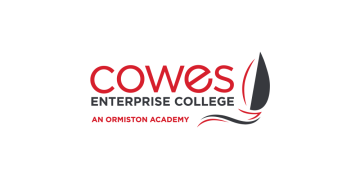After more than two decades of freedom from local authority control, general FE colleges are today operating in a different social and economic climate to the days when they were incorporated. Ann Hodgson makes the case for a new post-incorporation college model.
It’s more than 20 years since FE colleges gained their freedom from local education authorities, so high time to reflect on whether the model of incorporation designed for the late 20th century remains fit for purpose.
The recently published book The coming of age for FE? Reflections on the past and future role of further education colleges in England argues that the current social and economic circumstances suggest the need for a new post-incorporation model.
Incorporation has undoubtedly played its part in the considerable achievements made by FE colleges over the last two decades.
Post-16 participation, retention and success rates have risen, college buildings have been transformed, regular national and international skills competitions have showcased the excellent work that colleges support and many now have an international as well as a national and regional reputation.
However, there have also been downsides.
Staff morale remains fragile and conditions of service for staff in FE colleges do not match those in schools or universities.
National funding steers have sometimes led colleges to put financial viability above the needs of students, employers or their relationship with the local community
Notable instances of poor management style and ‘gaming’ behaviour have tarnished the reputation of the sector with clear winners and losers in the competition for survival. There has been a relentless driving down of student course hours and national funding steers have sometimes led colleges to put financial viability above the needs of students, employers or their relationship with the local community.
Of course wider social, economic and political factors have also had a powerful influence on the way that colleges operate. Colleges are key partners in economic growth but also highly susceptible to changes in the economy and labour market.
Austerity is now the name of the game and colleges will only thrive if they contribute to economic prosperity. Given this context, the book suggests colleges can play a unique role as local/ regional economic and vocational hubs with a key focus on lifelong learning, allowing them to return to their traditional roots and to exploit their expertise in and facilities for technical, vocational and adult learning.
In order for colleges to take on this role, however, other providers in the locality have to play their part in local/regional collaborations.
At a time when all young people need to be in some form of education or training until the age of 18, school sixth forms and sixth form colleges have to take on greater responsibility for all levels of general education rather than focusing narrowly on level three provision, leaving colleges as the primary providers of vocational education and training.
When funding is so tight, there simply is no room for wasteful duplication of provision at the local level. This does not suggest a one-size-fits all approach to each locality or region; each area would need to determine the most appropriate configuration of provision based on demographics, employment patterns, transport links and geography.
This model suggests much greater devolution of responsibility for decision-making to the local or regional level. National government needs to move away from top-down policy levers that focus on competition between providers for students and funding; high-profile performance measures that highlight institutional ranking; punitive inspections that encourage conformity rather than innovation and the constant introduction of new types of providers into the system to stimulate the market.
Instead, it should be developing a facilitative national policy framework that sets national standards, priorities and objectives but encourages a climate of longer-term planning, area-wide funding and jointly owned performance measures related to learner progression and destinations.
The future viability and visibility of FE colleges — both currently under threat — arguably lies less in being a discrete national sector and more in their role as hubs for the building of vibrant local and regional high skills ecosystems.








I watched it come. I watched it go. Nothing changed apart from staff motivation hitting the floor over the years. And then I gave up and left teaching in 2003.
And here is 2015.
Talking about the same things as we did in 1993.
Go figure.